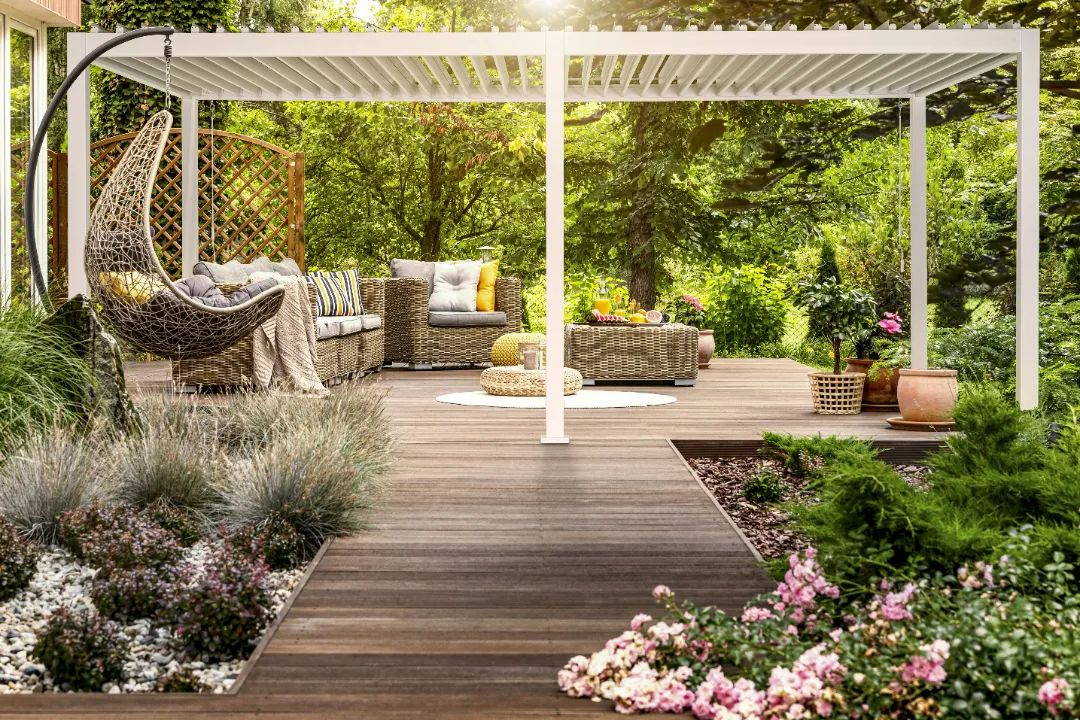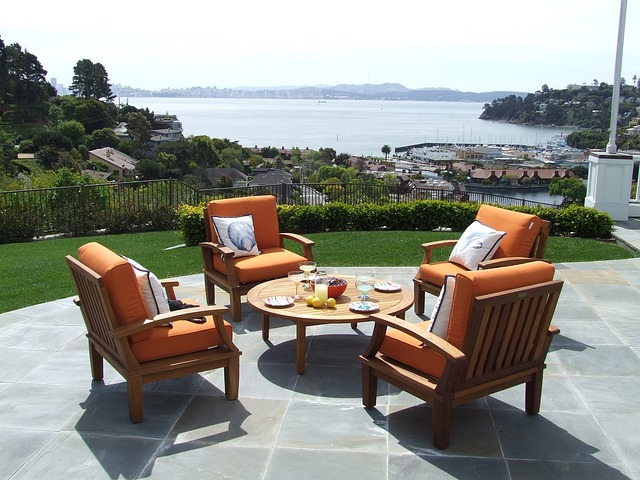What Are Some Popular Materials Used in Outdoor Furniture?
Outdoor furniture plays a crucial role in enhancing the beauty and functionality of gardens, patios, and balconies. With the right materials, outdoor spaces can be transformed into cozy retreats or elegant entertainment areas.
Choosing the perfect material depends on factors like durability, weather resistance, style, and maintenance. Here we list the most popular materials used in outdoor furniture and their benefits, helping you make an informed decision.
Aluminum
Aluminum is one of the most widely used materials in outdoor furniture, and for good reason. It’s lightweight yet sturdy, making it easy to move furniture around as needed. Aluminum is naturally resistant to rust, which is especially beneficial in areas with high humidity or frequent rain.
This material is also highly versatile, allowing for a variety of finishes and designs, from sleek modern pieces to more traditional styles. Maintenance is minimal—simply wipe it down with a damp cloth to keep it looking new. For those seeking durable and practical options, aluminum patio furniture offers the perfect balance of functionality and style.
Teak
Teak is often considered the gold standard for outdoor furniture. This premium hardwood is prized for its exceptional durability and natural beauty. Teak contains natural oils that make it resistant to moisture, rot, and insect damage. Its dense grain ensures it can withstand years of exposure to harsh weather without losing its strength.
Over time, teak furniture develops a distinctive silver-gray patina, which adds to its elegance. However, if you prefer the golden hue of new teak, regular oiling can help preserve its original color. Although it comes with a higher price tag, the longevity and timeless appeal of teak make it a worthwhile investment.
Wicker (Rattan)
Wicker furniture has long been a favorite for outdoor spaces due to its timeless aesthetic and comfort. While natural rattan is a traditional choice, synthetic wicker made from materials like polyethylene has become more popular for outdoor use. Synthetic wicker is highly durable, UV-resistant, and capable of withstanding various weather conditions.

Stainless Steel
Stainless steel is a go-to material for modern outdoor furniture designs. Known for its strength and sleek appearance, stainless steel furniture brings a contemporary edge to outdoor spaces. It’s resistant to rust, corrosion, and extreme temperatures, making it ideal for both warm and cold climates.
Plastic (Polypropylene or HDPE)
Plastic is a practical choice for outdoor furniture due to its affordability, versatility, and low maintenance. Modern plastics, such as high-density polyethylene (HDPE), are engineered to resist fading, cracking, and UV damage, making them ideal for outdoor use.
Concrete
For those who prefer a bold, industrial look, concrete is an excellent material choice. It’s highly durable, weather-resistant, and offers a modern aesthetic. Concrete furniture is especially well-suited for windy locations due to its weight, which prevents it from tipping over easily.
Hardwood (Eucalyptus, Cedar, Acacia)
In addition to teak, other hardwoods like eucalyptus, cedar, and acacia are frequently used in outdoor furniture. These woods are more affordable alternatives to teak and still offer excellent durability when treated properly.

Cast Iron
Cast iron is a traditional material known for its intricate designs and sturdy build. While it’s not as lightweight or portable as other materials, its classic appeal makes it a popular choice for garden benches and dining sets.
Material Comparison Table
|
Material |
Advantages |
Considerations |
|
Aluminum |
Lightweight, rust-resistant, low maintenance |
May dent under heavy impact |
|
Teak |
Extremely durable, natural resistance to elements |
Higher cost, requires occasional oiling |
|
Wicker (Synthetic) |
Stylish, UV-resistant, lightweight |
May not last as long as metal or hardwood |
|
Stainless Steel |
Durable, rust-resistant, modern look |
Heavier, more expensive than aluminum |
|
Plastic (HDPE) |
Affordable, weatherproof, easy to clean |
Less elegant, may fade over time |
|
Concrete |
Very durable, stable in windy areas |
Heavy, limited portability |
|
Hardwood |
Natural beauty, pest-resistant |
Requires regular maintenance to stay durable |
|
Cast Iron |
Elegant, durable, weather-resistant (when coated) |
Heavy, prone to rust without proper care |
Conclusion
Choosing the right material for your outdoor furniture is key to creating a comfortable and stylish space that lasts. Whether you prioritize durability, aesthetics, or budget, materials like aluminum, teak, wicker, stainless steel, and more offer unique advantages to suit your needs.
Investing in high-quality outdoor furniture ensures that your garden, patio, or balcony remains a welcoming retreat for years to come. Take into account your local climate, maintenance preferences, and personal style when selecting the perfect pieces to enhance your outdoor living experience.
